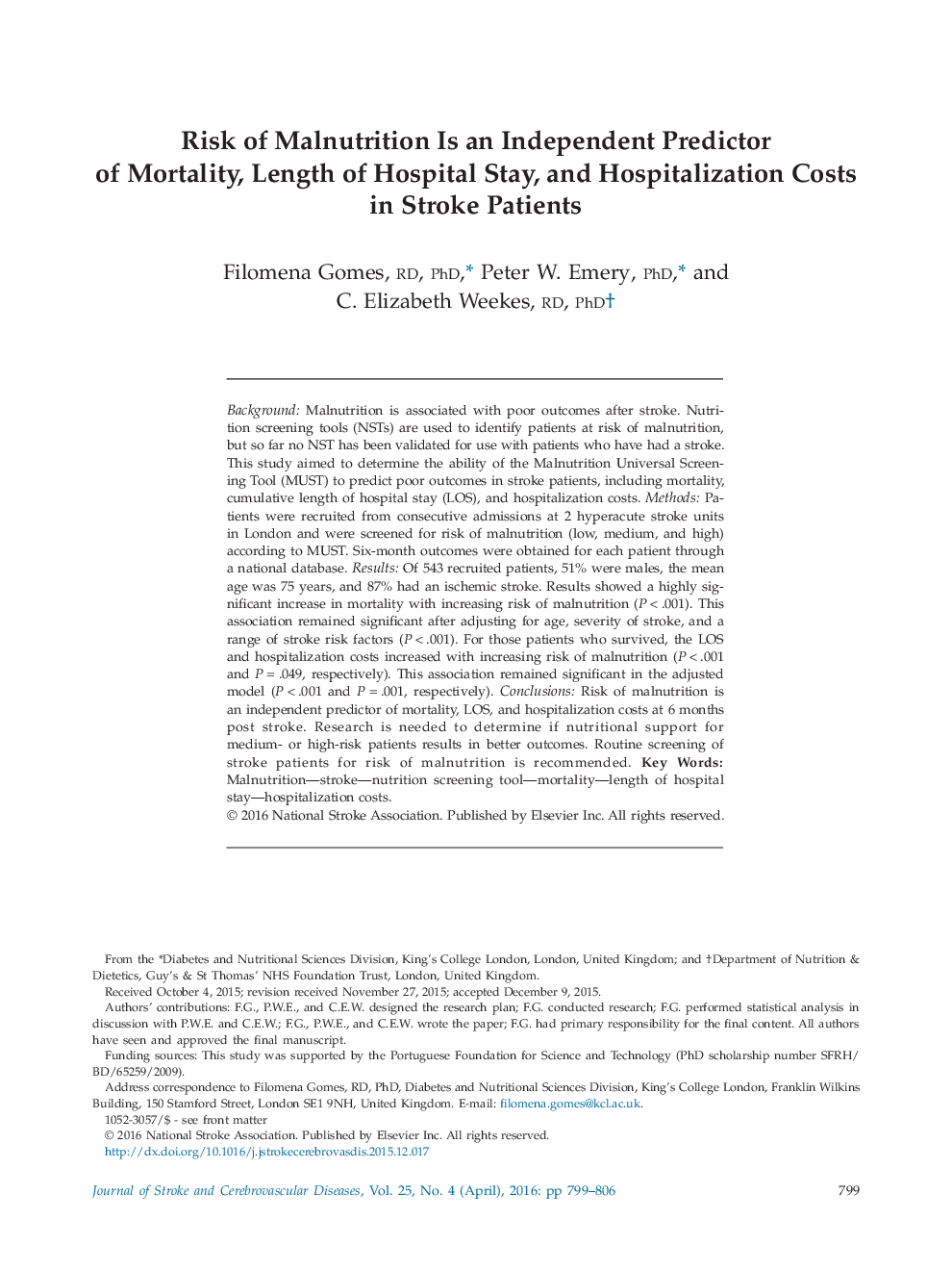| Article ID | Journal | Published Year | Pages | File Type |
|---|---|---|---|---|
| 2701609 | Journal of Stroke and Cerebrovascular Diseases | 2016 | 8 Pages |
BackgroundMalnutrition is associated with poor outcomes after stroke. Nutrition screening tools (NSTs) are used to identify patients at risk of malnutrition, but so far no NST has been validated for use with patients who have had a stroke. This study aimed to determine the ability of the Malnutrition Universal Screening Tool (MUST) to predict poor outcomes in stroke patients, including mortality, cumulative length of hospital stay (LOS), and hospitalization costs.MethodsPatients were recruited from consecutive admissions at 2 hyperacute stroke units in London and were screened for risk of malnutrition (low, medium, and high) according to MUST. Six-month outcomes were obtained for each patient through a national database.ResultsOf 543 recruited patients, 51% were males, the mean age was 75 years, and 87% had an ischemic stroke. Results showed a highly significant increase in mortality with increasing risk of malnutrition (P < .001). This association remained significant after adjusting for age, severity of stroke, and a range of stroke risk factors (P < .001). For those patients who survived, the LOS and hospitalization costs increased with increasing risk of malnutrition (P < .001 and P = .049, respectively). This association remained significant in the adjusted model (P < .001 and P = .001, respectively).ConclusionsRisk of malnutrition is an independent predictor of mortality, LOS, and hospitalization costs at 6 months post stroke. Research is needed to determine if nutritional support for medium- or high-risk patients results in better outcomes. Routine screening of stroke patients for risk of malnutrition is recommended.
